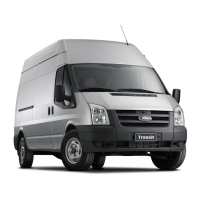Warning levels and braking inter-
vention
Please refer to at the start of the
chapt
er on page 167.
Speed ranges
The Automatic Emergency Braking system
provides maximum assistance in the fol-
lowing speed ranges:
— Reaction to vehicles: around 5 km/h
(around 3 mph) to around 250 km/h
(around 155 mph).
— Reaction to bicycles and motorcycles:
around 5 km/h (around 3 mph) to
around 250 km/h (around 155 mph).
— Reaction to pedestrians: around 5 km/h
(around 3 mph) to around 85 km/h
(around 53 mph).
The assistance may include an advance
warning, an urgent warning and automatic
braking or a braking intervention. A dis-
tance warning may also be displayed.
Inuencing factors
Whether and in what speed range the Au-
tomatic Emergency Braking system reacts
to the specified objects depends on the fol-
lowing factors:
— Type of object.
— Direction of travel of the object.
— Speed of the object.
— Speed of the vehicle.
The operating range may therefore be re-
stricted if the vehicle approaches an object
very quickly and there is therefore little
time for a reaction.
In addition, not all warning levels are used
in all situations. Depending on speed, there
may not be an advance warning or an ur-
gent warning, for example. Instead, auto-
matic braking may take place immediately
in order to ensure optimum protection for
the object.
Distance warning
The Automatic Emergency
Braking system detects when
safety is endangered due to
driving too close to the vehicle in
front.
T
he indicator lamp lights up. Increase
the distance.
Advance warning
The Automatic Emergency Braking
system detects a possible collision
and prepares the vehicle for possible
emergency braking.
An acoustic warning sounds and the
red warning lamp lights up. Brake or
take evasive action!
Urgent warning
If you do not react to the advance warning,
the system may initiate a short braking jolt
in order to draw attention to the increasing
collision risk. Brake or take evasive action!
Automatic braking
The Automatic Emergency Braking system
can brake the vehicle automatically in sev-
eral stages with increasing braking force.
The reduced speed may help to minimise
the severity of an accident.
Braking intervention
If the system detects that you are braking
insuciently when there is a risk of colli-
sion, the Automatic Emergency Braking
system can increase the braking force and
help prevent a collision. The braking inter-
vention takes place only for as long as you
press the brake pedal hard.
Limits of the Automatic Emergen-
cy Br
aking system
Please refer to at the start of the
chapt
er on page 167.
The Automatic Emergency Braking
system is not available or its func-
tions are restricted immediately aer
the vehicle is started. During this
time, the indicator lamp lights up in
the display of the instrument cluster.
The Automatic Emergency Braking system
has physical and system-related limits. You
should therefore always be prepared to
take full control of the vehicle if necessary.
Automatic Emergency Braking 169
2KF012720AB

